Florence
The Duomo
The Santa Maria del Fiore, in Florence better known simply as the “Duomo”, which means Cathedral. Although renowned for being one of the lasting symbols of the Italian Renaissance (1400 - 1600), the Duomo actually started out as Gothic structure. Florence was the centre of the Renaissance (Rebirth) and led the way in Renaissance architecture until 1490 when it became a Republic and the city fell upon hard times.
The Duomo consists of three buildings, the baptistery, the cathedral and the bell tower. The first of the three to be built was the baptistery which was constructed on the site of a Roman temple. It is known to be one of the oldest buildings in Florence and is thought to date from the 11th century though the exact date is not known. The gilded bronze door facing south was made in 1336 by Andrea Pisano while the doors facing north and east - known with the name of Gate of “Paradise” - were made by Lorenzo Ghiberti in 1427 and in 1452. The baptistery has a magnificent mosaic ceiling depicting the Last Judgment which dates from the 13th century.
The construction of the cathedral began in 1296 by Arnolfo di Cambio although he died before it was completed leaving it without a dome. It is relatively easy to erect a dome using formwork for support, but Florence was unwilling to pay for this so they wanted it doing without, consequently they held a competition to find a suitable design, this was won by Filippo Brunelleschi who devised a way of doing that by producing a double skin. His dome consisted of two layers, an inner dome and an outer one to protect it from the weather and give it a more pleasing external form. It consisted of circular profiles of the ribs and rings, the spaces between the ribs and rings being spanned by the inner and outer shells. These were constructed of stone for the first 7 metres and brick above this height. The ribs – stone arches - are 7 feet thick at the base and tapering to 5 feet, which meet at an open stone compression ring at the top. The weight is displaced down and across by the use of bricks in a herringbone bond which work like bookends holding books in place. Five chains were placed around the circumference and were built into the brickwork as it progressed upwards to withhold the lateral force of the dome and prevent it from thrusting outwards.
Finished around 1367, the Cathedral was covered by coloured marble like the Baptistery, with the exception of the facade that remained unfinished until 1887 when the 20 year project by Emilio de Fabris completed it in the style of the Gothic Revival.
This bell tower was started in 1334 by Giotto di Bondone. He was succeeded in 1343 by Andrea Pisano - who produced the South Doors of the Baptistery. Pisano continued the construction of the bell tower, following Giotto’s design of a high slender structure with a square base and sides of just over 47ft. Pisano was followed by Francesco Talenti who built the top three levels, completing the bell tower in 1359: Although he did change the original design of Giotto by not building a spire, thus reduced its’ planned height from 400ft to 277ft.
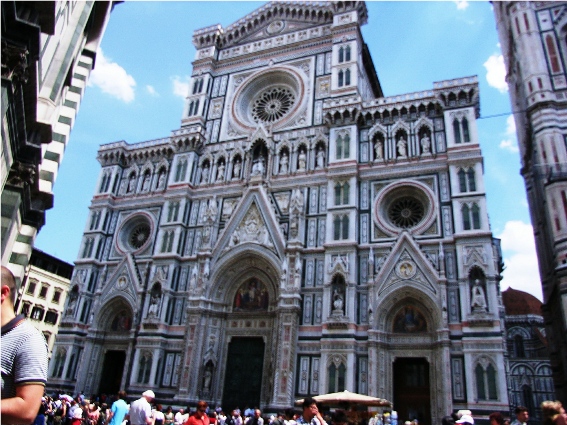
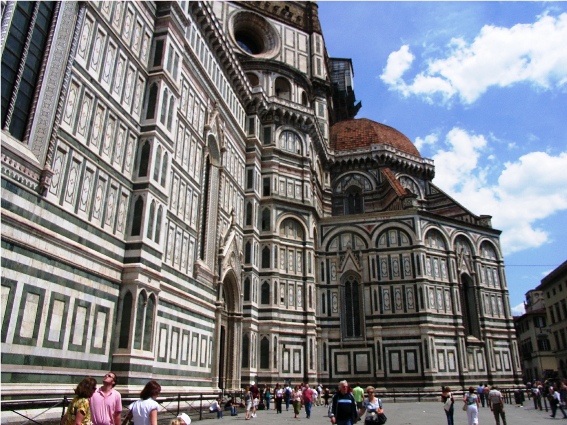
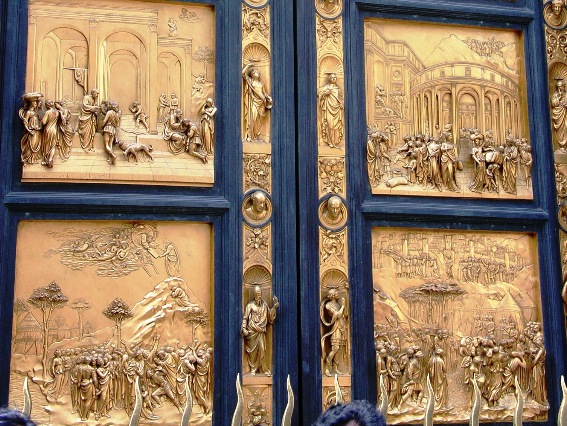
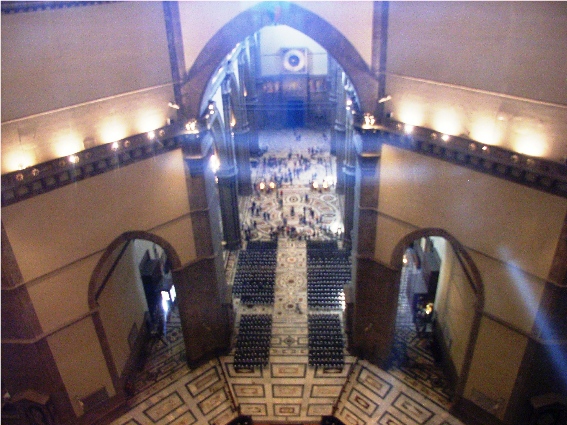
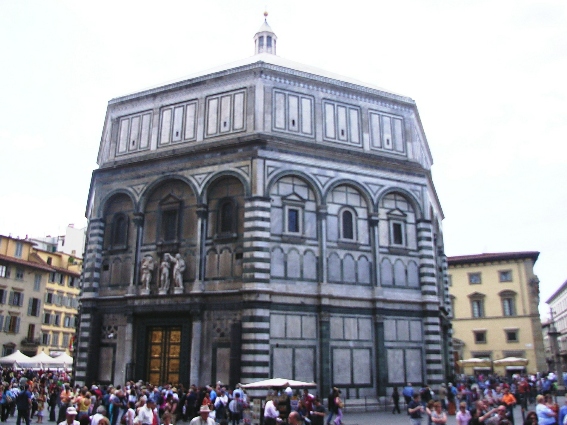
To see more photographs and take a virtual tour of the site click on the photoshow below.
Panorama Available at airpano.com
View in Google Street View and Google Earth
